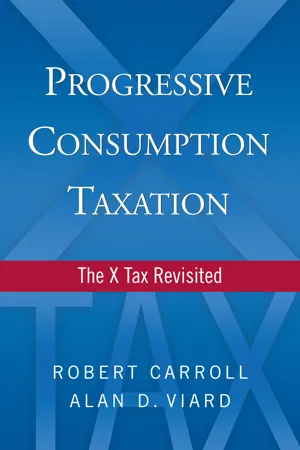
- 222 pages
- English
- ePUB (mobile friendly)
- Available on iOS & Android
About this book
Alone among developed countries, the United States has no broad-based national consumption tax. Yet, economic analysis suggests that consumption taxation is superior to income taxation because it does not penalize saving and investment. The authors conclude that the U.S. income tax system should be completely replaced by a progressive consumption tax. The authors argue that the X tax, developed by the late David Bradford, offers the best form of progressive consumption taxation for the United States. To achieve progressively, the X tax modifies the value added tax by splitting its consumption tax base into two components, wages and business cash flow. The X tax applies graduated tax rates to households' wages and applies a flat tax rate, equal to the highest wage tax rate, to business firms' cash flows. The authors outline concrete proposals for the X tax's treatment of pensions and fringe benefits, business firms, financial intermediaries, international transactions, owner-occupied housing, state and local governments, the transition, and other issues. By adopting the X tax, the United States can preserve tax progressively while promoting economic growth through the removal of tax penalties on saving and investment.
Frequently asked questions
- Essential is ideal for learners and professionals who enjoy exploring a wide range of subjects. Access the Essential Library with 800,000+ trusted titles and best-sellers across business, personal growth, and the humanities. Includes unlimited reading time and Standard Read Aloud voice.
- Complete: Perfect for advanced learners and researchers needing full, unrestricted access. Unlock 1.4M+ books across hundreds of subjects, including academic and specialized titles. The Complete Plan also includes advanced features like Premium Read Aloud and Research Assistant.
Please note we cannot support devices running on iOS 13 and Android 7 or earlier. Learn more about using the app.
Table of contents
- List of Illustrations
- Acknowledgments
- Introduction
- 1 Why Tax Consumption?
- 2 The Case for the X Tax
- 3 Maintaining Progressivity
- 4 Fringe Benefits and Transfer Payments
- 5 Business Firms
- 6 Financial Services
- 7 International Transactions
- 8 The Transition
- 9 The Nonbusiness Sector
- 10 The VAT Alternative
- Conclusion
- Notes
- References
- About the Authors